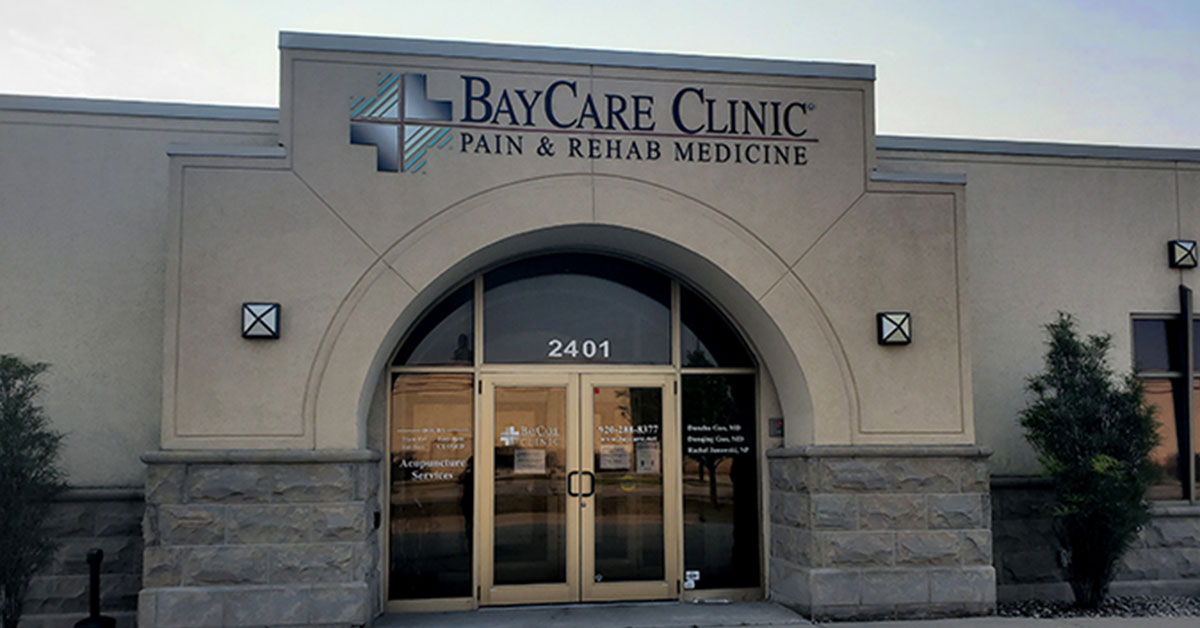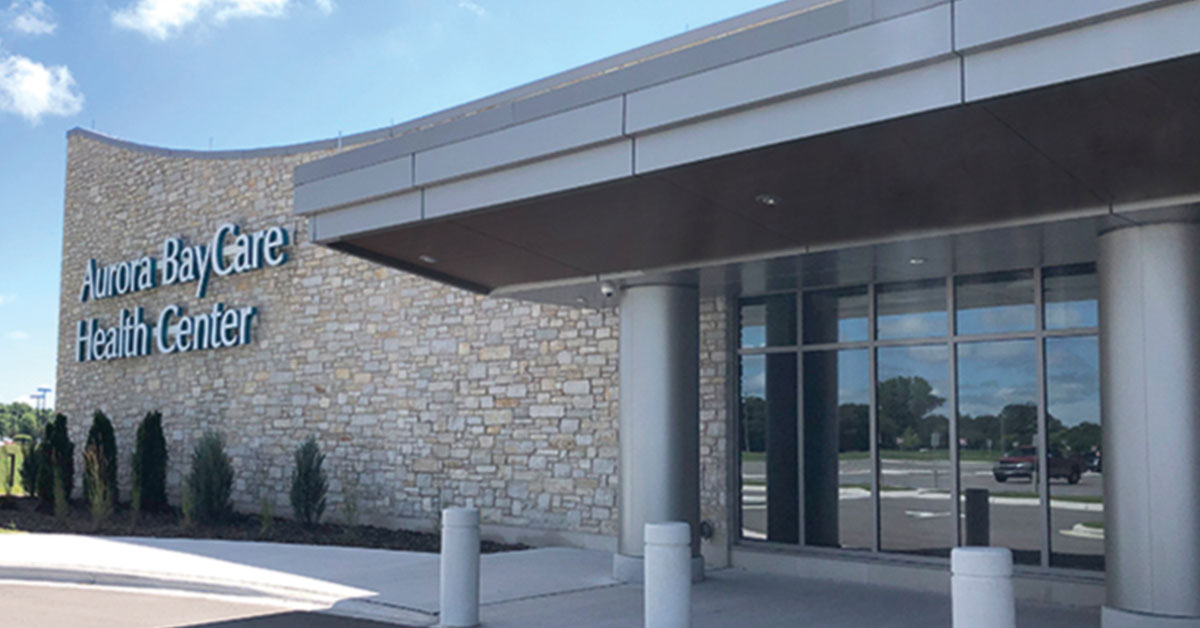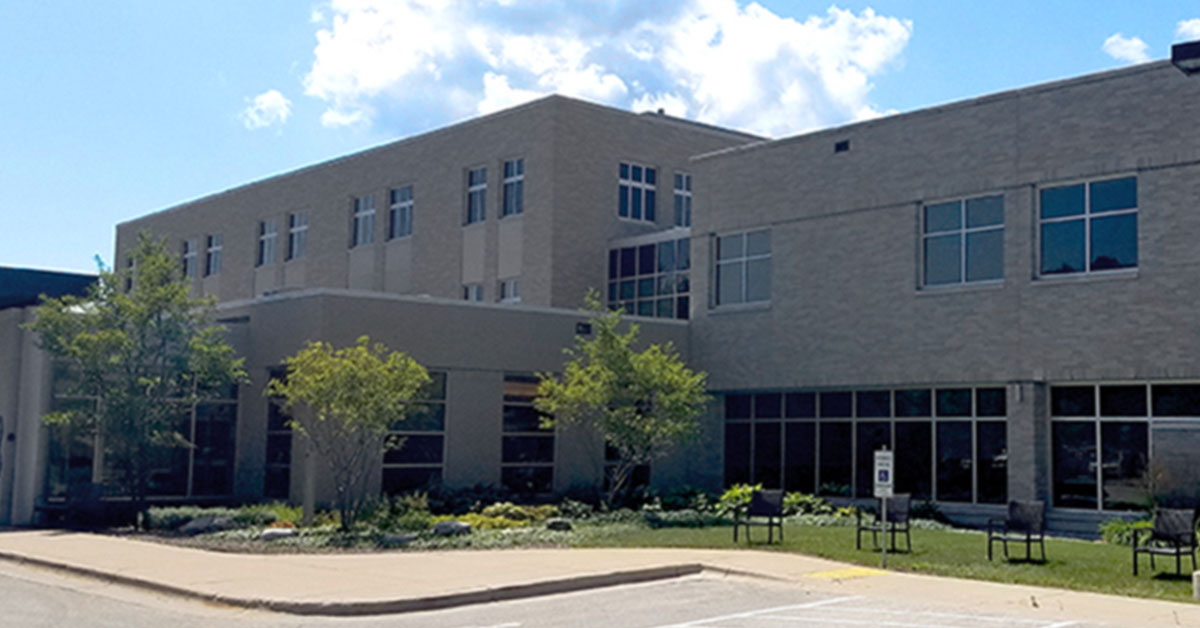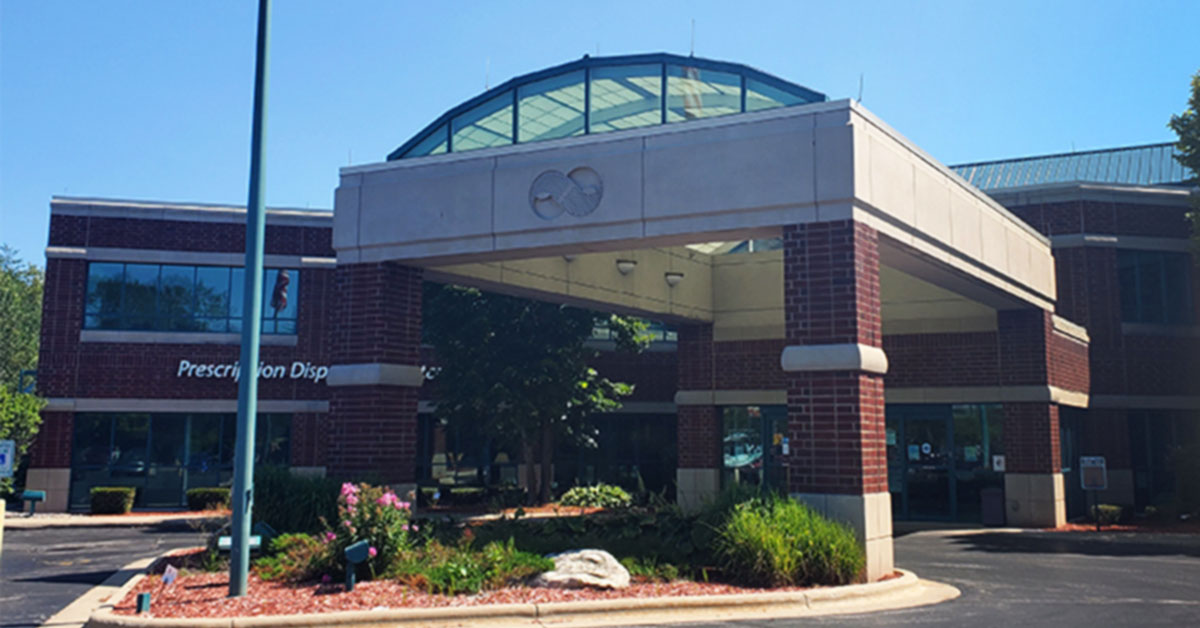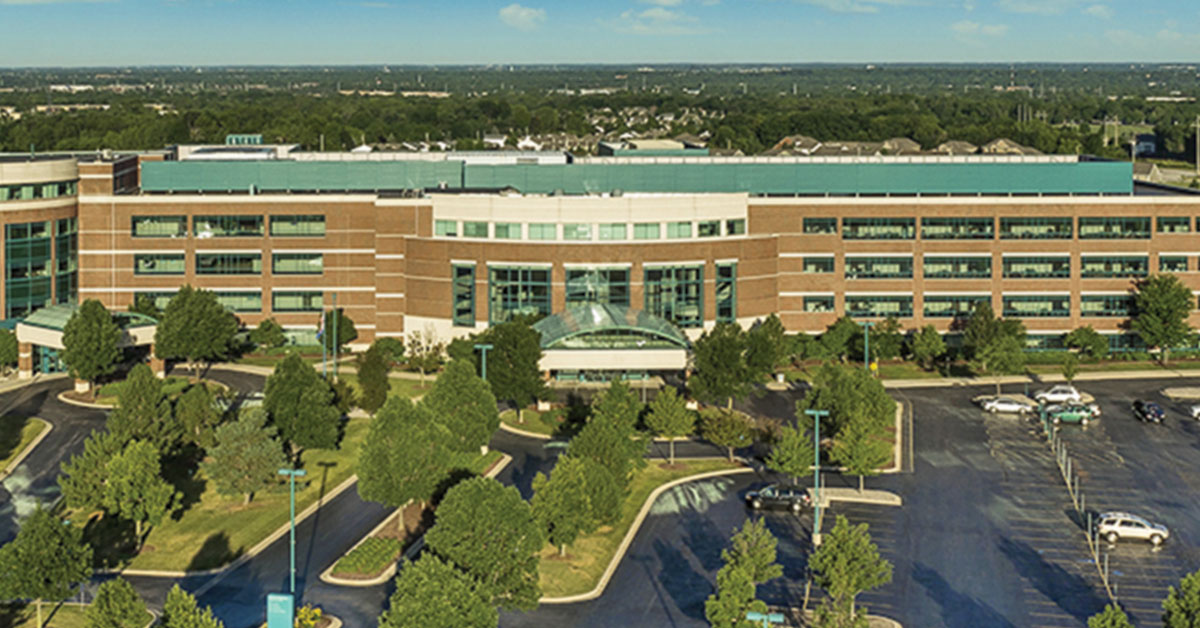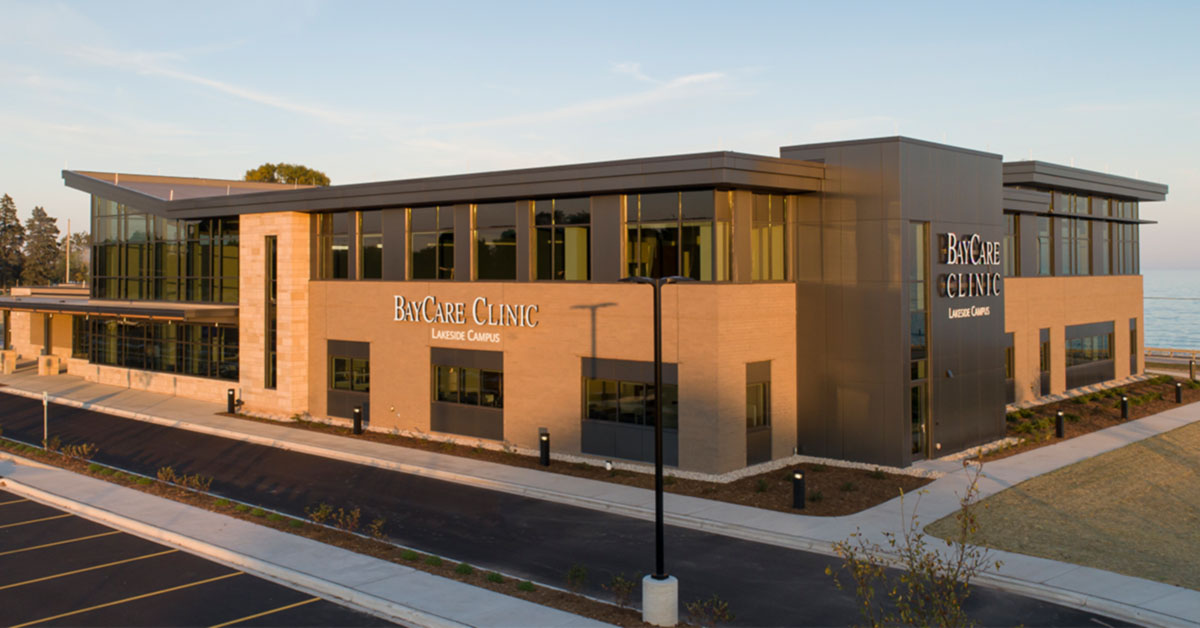Common Questions
Pain & Rehab Medicine
Experiencing pain can lead to questions
Here you will find common questions grouped by category. If you still have questions or concerns, consider requesting an appointment and discussing with a pain and rehab specialist.
My hand occasionally falls asleep when I drive and occasionally I drop things. What can cause this?
Symptoms like these along with occasional numbness and tingling may be from a few different sources. One common source is carpal tunnel syndrome. A proper diagnosis is needed for treatment and can be obtained by having a physical examination. Sometimes nerve and muscle testing is necessary. In the case of carpal tunnel, options can be discussed that range from simple to more aggressive treatment.
I’ve been told I have carpal tunnel syndrome. I wear a brace but it doesn’t help. I don’t want surgery. What are other treatment options?
There are three main options for treating carpal tunnel. The braces are the most conservative treatment, and many people respond well to this. If you still have symptoms despite bracing your remaining options are surgery or you could have a cortisone injection into the tunnel. Some people notice success from the injections sufficient to avoid surgery, or at least put it off until a later time.
What is facet joint arthritis?
The facet joints are joints in the spine that are prone to arthritis just as joints in the hands and knees. Bending and twisting from side to side may increase the pressure on these joints and cause an increase in pain. Facet joint arthritis may be found on imaging studies. Possible treatments may include anti-inflammatory medications, physical therapy, and pain medications. Patients suffering from severe facet pain may benefit from steroid injections into the facet joint.
Can a pinched nerve in my neck cause arm pain?
Yes, similar to sciatic pain that is usually caused by lumbar disk herniation, nerves that originate from the cervical spine (neck) can be pinched by herniated disks or bone spurs. You may experience neck and arm pain with occasional numbness and tingly feelings. Occasionally, this condition can cause weakness in the arm or hand. Affected individuals are usually in their 40s or 50s. Initial therapy is physical therapy with traction. Patients who do not respond to initial conservative treatment may be a candidate for an epidural steroid injection or surgery.
I’m 41 years old and have knee pain. Are there any treatment options besides surgery?
Knee pain can come from many different sources. Commonly, arthritis begins to develop as we age and can be a primary cause of knee or other joint pain. There are many non-surgical options available to treat arthritis including medication, exercise and joint fluid replacement therapy. In addition, a non-invasive pulsed electrical stimulation device can be helpful. Pain in the knee may come from a different source, and a good physical exam is needed to identify additional causes so appropriate treatment can be utilized.
My leg was amputated. My doctor said I am ready to get a new leg. How do I get one?
At this point, you are ready for a preparatory prosthesis. You should have a consultation with a physiatrist who will discuss with you your specific needs, and help to design a prosthetic leg. You will then work together with your physiatrist and a prosthetist (prosthetic mechanic) to build your new leg and make the necessary adjustments until it is the perfect leg for you.
What causes sciatic pain? What can I do to prevent it?
Sciatic pain is a generic term for any pain in the area of the leg where the sciatic nerve travels. The sciatic nerve is actually a bundle of smaller nerves that start in different places and end in different places. Sciatic pain, or sciatica, can come from any one of these areas, or an irritation of the nerve bundle. Some examples of where the pain might start from are the spine, pelvis, buttock muscles, or nerve entrapment in the leg. Prevention of this pain is through learning what the exact cause is, and how to avoid aggravation of this area.
What is sciatic pain?
Sciatic pain generally starts in the buttocks and runs down the thigh and may even continue all the way to the foot. Pain may also be present in the lower back. Sciatic pain is caused by irritation to the nerve roots connecting to the sciatic nerve, most commonly caused by herniated or bulging lumbar intervertebral disks. Typically no specific trauma is to blame. Simple activity such as bending or twisting may bring on this pain. Sciatic pain most commonly occurs in people 30 to 50 years of age; the prime age is 40 years old.
How is sciatic pain diagnosed and treated?
Diagnosis of sciatic pain is made both clinically with history and physical exam and with magnetic resonance imaging (MRI) studies. The main treatment for sciatic pain is rest in order to allow the inflammation of the nerves to settle. Medications such as anti-inflammatories and muscle relaxants may be appropriate. Injections using both steroids and numbing medicine may be injected into the spine to help reduce the inflammation and decrease the pain. If an individual is not responding to conservative treatments, surgery may be necessary. Not all individuals with disk problems are surgical candidates.
What is facet joint arthritis?
The facet joints are joints in the spine that are prone to arthritis just as joints in the hands and knees. Bending and twisting from side to side may increase the pressure on these joints and cause an increase in pain. Facet joint arthritis may be found on imaging studies. Possible treatments may include anti-inflammatory medications, physical therapy, and pain medications. Patients suffering from severe facet pain may benefit from steroid injections into the facet joint.
A few months ago I developed back pain, but lately it has been going down my legs. What should I do?
There are many reasons why back pain might cause radiation of symptoms into the legs. This might represent a change or a new problem. The symptoms may be coming from the spine, nerves or muscles. You should have this change in symptoms evaluated by a trained back specialist, a physiatrist, to determine how best to be treated.
I am a diabetic but I also have chronic low back pain. I am starting to have pain and tingling down my legs. What is causing this?
These symptoms into your legs may indicate further degenerative changes in your spine causing irritation of the nerves. Also, with the diabetes, some of these symptoms may occur due to nerve ending changes in the legs or arms as a result of the diabetes. Diagnosis of this may be done using a nerve conduction study and an electromyogram, (EMG). Once the diagnosis is made, there are treatment options available.
Is there a minimally invasive procedure that can be done for my back and leg pain?
Yes, Percutaneous disk decompression is a minimally invasive disk procedure where small contained disk herniations can be treated by simply inserting a needle via the skin and removing the herniated part of the disk. This procedure is especially appropriate for relatively young patients with symptomatic small contained disk herniations. An IDET (intradiscal electrothermal therapy) procedure is a similar minimally invasive procedure for back pain patients with degenerative disk disease.
An MRI showed a herniated disk is causing my low back pain and left leg pain. My pain is getting better, but what will happen to the herniated disk fragment?
Follow-up studies of patients with sciatic pain who were treated successfully with conservative treatment (they did not have surgery) showed that the majority had significant reduction in the size of the herniation. It appears that the larger the herniation and the more separated the herniation fragment is from the mother disk, the more likely it is to reduce in size or even disappear.
What are the possible causes of low back pain?
Low back pain is a common condition that will affect most of us at some point in our lives. The exact pain generator can be difficult to pinpoint, especially in patients with low back pain without leg radiation. Intervertebral discs, surrounding ligamentous structures, nerve roots, and facet joints of the spine are potential pain generators. The good news is that most of the time back pain improves with conservative treatment without exact identification of the pain generator. Of course if further intervention such as a surgical procedure is planned it is crucial that the pain generator is identified.
Can my headaches be caused by a neck problem?
Some headaches, especially those that start from the neck and radiate to the back of the head and above can be caused by cervical spine conditions. Some of these patients are suffering from facet joint disease in the upper part of the cervical spine (C2-3 and C3-4). These patients can be identified by doing a diagnostic medial branch block in that area. If the patients receive dramatic relief of their headaches it confirms the C2-3 and C3-4 area as their pain generator.
I was involved in an accident and I have back pain. What should I do next?
People often hurt themselves in this way or even on the job. A Physiatrist is a back injury specialist with training in diagnosing and treating these injuries to achieve increased activity and pain reduction. Together, we can achieve better results if proper treatment is begun right after the injury occurs.
I do a lot of sitting at work. This hurts my back. Any suggestions?
This may be due to the set-up of your workspace. Too often, typical workspace setups put people into difficult postures and create bad habits and poor body mechanics. Evaluating the setup and making good ergonomic alterations may improve this condition. If this is done, and the pain continues, then your back should be evaluated to determine why and where it hurts.
I’ve had back pain for years and had back surgery, but I still have pain. Now what?
The surgery has corrected the original anatomical problem that initially caused your pain. Over the course of time, both before and after the surgery, your body does things to try and naturally splint your back to protect it from worsening. This reaction by the body, unfortunately, can cause its own issues, as anytime the body overcompensates for one problem, it can create a second one. A physiatrist can help sort out these issues, and prescribe treatments that can help put you back on the course of wellness.
My 19-year-old daughter is complaining of pain in her upper back, since she started college. What could be causing this?
Frequently, students who need to carry heavy loads of books do so in a backpack or shoulder bag. Quite often, these bags are not used as they were intended to be worn. People have the tendency to throw the backpack over one shoulder, which unevenly distributes the heavy weight across the spine causing overcompensation and pain. Wearing the backpack evenly as intended should help this situation. If not, additional treatment may be needed.
I’ve had a fusion done on my lower back, but I still have pain. Would a TENS unit help me?
The pain associated with post-surgical recovery often comes from tight muscles that spasm into a natural splint as the body heals. Additionally, pain may come from another place in the back than where surgery was. TENS (transcutaneous electrical nerve stimulation) units work to change your perception of the pain signals. They do not, however, help fix the problem. If your pain is from tight muscles, another stimulator for them may be more appropriate. If the pain is from another location, that source should be found to treat it accurately.
Can back pain be hereditary?
Degenerative disk disease, which is the most common reason for low back pain, has a strong genetic component. Genetically, some of us are more likely to develop degenerative disk disease, and people with degenerative disk disease are more likely to develop low back or neck pain. This is usually why people with early age back problems (in their 20s or 30s) are more likely to have some other family member (siblings) affected by the same condition.
What is degenerative disk disease?
Degenerative disk disease refers to the wear and tear changes in the spine, particularly the disks. The change generally seen is disk height reduction, or thinning of the disk. The most common areas include the lumbar and cervical spine. While seen less frequently, one can have degenerative disk disease of the thoracic spine. These changes themselves could be a reason for pain, or resulting spinal canal narrowing and pinched nerves can cause pain.
How is degenerative disk disease diagnosed and treated?
Degenerative disk disease of the spine may cause stiffness, local pain, and radiation of pain into an extremity depending if a nerve root is affected. Most patients will present with low back or neck pain. Diagnosis is made both clinically though history and physical exam, and via magnetic resonance imaging (MRI). Primary management for DDD is non-operative and includes nonsteroidal anti-inflammatory medications and exercise programs to strengthen core musculature in the abdomen and spine. The most common interventional pain management technique used for radiating pain caused by DDD is the epidural steroid injection. Surgical intervention may be an option when non-operative management has failed.
What is a vertebral compression fracture?
A vertebral compression fracture is a fracture of a vertebral body. This usually results in some degree of collapse of the vertebral body, which in turn often causes pain. The most common sites are the thoracic and lumbar spine. There may or may not be a history of trauma (falls, for example), and they are common in older patients with osteoporosis. Initial treatment is conservative and consists of physical therapy, medications, and use of a back brace as needed. If these measures fail, a surgical procedure called vertebroplasty can be done to help stabilize the fracture and relieve pain.
What is a trigger point?
Some patients with neck and back pain may have a significant myofascial component to their pain. This means that muscles around the pathology are contracting to the point that they become the reason for the pain. A contracted muscle forms a lump that can be felt with palpation. These painful areas of contracted muscle are called trigger points. Trigger points can be treated by physical therapy techniques such as massage and stretching. Treatment can be facilitated by trigger point injections if necessary.
Can a pinched nerve in my neck cause arm pain?
Yes, similar to sciatic pain that is usually caused by lumbar disk herniation, nerves that originate from the cervical spine (neck) can be pinched by herniated disks or bone spurs. You may experience neck and arm pain with occasional numbness and tingly feelings. Occasionally, this condition can cause weakness in the arm or hand. Affected individuals are usually in their 40s or 50s. Initial therapy is physical therapy with traction. Patients who do not respond to initial conservative treatment may be a candidate for an epidural steroid injection or surgery.
An MRI showed a herniated disk is causing my low back pain and left leg pain. My pain is getting better, but what will happen to the herniated disk fragment?
Follow-up studies of patients with sciatic pain who were treated successfully with conservative treatment (they did not have surgery) showed that the majority had significant reduction in the size of the herniation. It appears that the larger the herniation and the more separated the herniation fragment is from the mother disk, the more likely it is to reduce in size or even disappear.
Does everyone with back pain need an MRI scan?
Most low back pain patients can be treated without an MRI, unless infection, fracture, or tumor is suspected. Usual back pain patients aged 30 to 50 are unlikely to have such conditions. Patients who do not respond to initial conservative therapies (physical therapy, etc.) and further interventions such as injections or surgery are considered, an MRI scan is indicated.
What is sacroiliac joint dysfunction?
The sacroiliac joint is a large joint that connects the lower portion of the spine to the pelvis. This is a true joint much like other joints in the body. The sacroiliac joint is strong and does not have much movement. This joint acts as a shock-absorbing structure. Individuals with SI joint dysfunction may have low back pain and even pain radiating down the leg, similar to back pain caused by disk problems. The pain with dysfunction of this joint is often caused by either too much movement or too little movement of the joint.
What is a spinal cord stimulator and who might be a candidate for a spinal cord stimulator trial?
A spinal cord stimulator is an electrical device that is implanted underneath the skin to help control radiating pain caused by damage to spinal nerves. It contains an electrode that is placed over the spinal cord which sends an electrical impulse to either the arms or the legs where the radiating pain travels to. The patient will have a tingling sensation to that area of the body when the device is turned on to help block the pain. Candidates for a spinal cord stimulator trial are patients who have failed surgical procedures and interventional pain management techniques including medications, injections and physical therapy.
What is spinal stenosis?
Spinal stenosis describes narrowing of the spinal canal. This condition usually develops gradually in older people as a result of degenerative disk disease. A degenerative disk loses its height, causing buckling of the connecting ligaments. A combination of this and facet joint hypertrophy (expansion) and disc bulging are the reasons for the narrowing of the spinal canal. Symptomatic patients usually have low back pain with radiation down the legs, which feels better when the patient leans forward (such as using a shopping cart).
Are there specific tests to identify the pain generator in my back?
If an invasive procedure or surgery is contemplated, it is absolutely crucial that the exact pain generator is identified. Low back pain patients can have a discogram in order to find out if a disk is the pain generator, and if so which disk is the problem. Under X-ray guidance, needles are inserted into the disks and the disks are stimulated by injecting a substance into them. Patients are able to tell which disk stimulation is creating their pain, therefore identifying the pain generator.
A few months ago I developed back pain, but lately it has been going down my legs. What should I do?
There are many reasons why back pain might cause radiation of symptoms into the legs. This might represent a change or a new problem. The symptoms may be coming from the spine, nerves or muscles. You should have this change in symptoms evaluated by a trained back specialist, a physiatrist, to determine how best to be treated.
I am a diabetic but I also have chronic low back pain. I am starting to have pain and tingling down my legs. What is causing this?
These symptoms into your legs may indicate further degenerative changes in your spine causing irritation of the nerves. Also, with the diabetes, some of these symptoms may occur due to nerve ending changes in the legs or arms as a result of the diabetes. Diagnosis of this may be done using a nerve conduction study and an electromyogram, (EMG). Once the diagnosis is made, there are treatment options available.
Is there a minimally invasive procedure that can be done for my back and leg pain?
Yes, Percutaneous disk decompression is a minimally invasive disk procedure where small contained disk herniations can be treated by simply inserting a needle via the skin and removing the herniated part of the disk. This procedure is especially appropriate for relatively young patients with symptomatic small contained disk herniations. An IDET (intradiscal electrothermal therapy) procedure is a similar minimally invasive procedure for back pain patients with degenerative disk disease.
Why is an MRI superior to a CT scan or X-ray for back pain?
In most patients ages 30 to 50 with usual back pain (no fracture, tumor or infection suspected) an MRI is a superior and cost-effective study compared to a simple X-ray or CT scan. MRI scan not only delineates the bony structure, but is also the most superior study for soft tissues such as disks, nerves, ligaments, and muscles.
What is a physiatrist?
A physiatrist is a doctor specializing in nerves, muscles, and bones. We diagnose and treat injuries or illnesses that affect how you move. Our goal is to reduce pain and restore function without surgery. We help patients stay as active as possible at any age. Our training allows us to diagnose and treat conditions throughout a person's lifetime.
What is interventional pain management?
Interventional pain management is a medical specialty devoted to the treatment of pain disorders using minimally invasive techniques including; steroid injections, physical therapy, spinal cord stimulators, intrathecal infusion pumps and nerve blocks independently or with other treatments. Medications may also be used for pain management if appropriate. Doctors who manage pain are frequently anesthesiologists who have done additional training to become an expert in treating pain. Patients with back and neck pain represent the majority of patients in this specialty.
What conditions does a physiatrist treat?
A physiatrist treats a broad range of conditions that affect patients of any age. Some examples of the common things we treat include: back and spine injury, carpal tunnel syndrome, pinched nerves in neck/back/arms/legs, amputee recovery, osteoarthritis and joint pain, whiplash, muscle strain/sprains, and conditions causing muscle spasticity. We also assist with balance and fall prevention, and sports related injuries.
What is the difference between physical medicine and physical therapy?
Physical medicine (physiatry) physicians are trained medical doctors who specialize in diagnosing and treating problems related to the musculoskeletal and nervous system. Physical therapy is one of many treatment options that might be prescribed by your physiatrist, and a physical therapist would administer that treatment.
I’m a paraplegic and I’ve recently moved to the area. Is there anyone that I should be working with?
Physiatrists are trained to follow the changes a person's body goes through from a spinal cord injury. Whether your injury is new or you are an experienced patient with great knowledge of your injuries, you will need to establish with a physician who understands the problems and issues that arise after spinal cord injury. Establish a relationship early with a physiatrist you trust so that you and your doctor become familiar with how your body and injury work.
I’ve had headaches for years and tried all the medications. What are some treatment options?
Headaches come in many forms. Although many headaches are called migraines, they in fact may be tension headaches instead. If you find that you have tight neck and shoulder muscles that are painful, these muscles might be the source of your headaches. Muscle relaxation techniques and treatments can help this. You may want to consider the use of Botox to help relax the muscles. Botox is an injection that helps to relax, tight, overactive muscles.
What is an epidural steroid injection. Who is a candidate for this injection?
With this injection, steroids (usually Depo-Medrol) are injected directly into the epidural space. The epidural space is the area where nerve roots travel through after they branch off from the spinal cord. Patients with conditions such as disk herniation in the lumbar spine as well as the neck are ideal candidates for this injection. Steroids are the most potent anti-inflammatory medication. As they are given locally to the area of the inflammation, they have a profound effect on the inflammation of the nerve roots and reduction and elimination of pain.
Why is an MRI superior to a CT scan or X-ray for back pain?
In most patients ages 30 to 50 with usual back pain (no fracture, tumor or infection suspected) an MRI is a superior and cost-effective study compared to a simple X-ray or CT scan. MRI scan not only delineates the bony structure, but is also the most superior study for soft tissues such as disks, nerves, ligaments, and muscles.
What is post-herpetic neuralgia?
Post-herpetic neuralgia (PHN) is a painful condition that develops at the area of lesions after the eruption and healing of shingles. This is commonly called neuropathic pain (pain related to damaged nerves). Fortunately, not everyone with shingles develops this type of pain. The older the patient is at the time they develop shingles, the more likely they are to develop PHN. Injections around the injured nerves can eliminate this condition especially when performed early in the course of the condition.
What is CRPS (complex regional pain syndrome)?
CRPS, formerly known as RSD or reflex sympathetic dystrophy, is a painful condition which usually affects an extremity. The cause of CRPS is not well understood, and there is no single test that can be used to make the diagnosis. Rather, the diagnosis is made by history and physical examination. There may or may not be a history of preceding trauma. Treatment typically consists of physical therapy and medications, with injections and pain psychology as needed.
What is radiofrequency ablation and when is it used?
Radiofrequency ablation is a procedure used to burn the nerves relaying facet joint arthritis-related pain. Most often facet joint injections are performed first; this is done by injecting steroid into the joint. If this injection is successful for only a short period of time, radiofrequency ablation can be performed. Patients can expect a longer duration of relief lasting months to a year or more.
Does everyone with back pain need an MRI scan?
Most low back pain patients can be treated without an MRI, unless infection, fracture, or tumor is suspected. Usual back pain patients aged 30 to 50 are unlikely to have such conditions. Patients who do not respond to initial conservative therapies (physical therapy, etc.) and further interventions such as injections or surgery are considered, an MRI scan is indicated.
